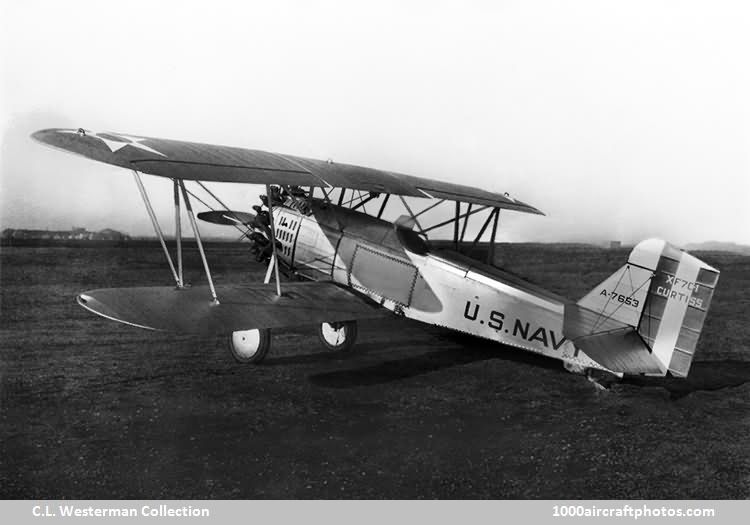09/30/2014. Remarks by Johan Visschedijk: "The single-seat Seahawk prototype was built as a Curtiss-owned entry in a 1927 USN fighter competition and first flew in February 1927. Powered with the 450 hp Pratt & Whitney R-1340B Wasp engine of the F6C-4, the Model 43 drew heavily on Hawk design experience with a touch of Falcon shown in the sweptback three-piece upper wing. A feature new to Curtiss was the installation of fuel tanks in each side of the fuselage outboard of the main structure, where they formed part of the streamlining. Armament consisted of two 0.30 in (7.62 mm) machine guns.
The prototype was tested by the USN as a landplane and a single-float seaplane under the unofficial designation of XF7C-1 while Curtiss called it the Curtiss Navy Fighter. When the production orders were placed, the USN purchased the prototype, designated it F7C-1 (later XF7C-1) and assigned the USN BuNo. A-7653 immediately preceding those of the production models. Following a crash, the original wings with 242 sq.ft (22'48 sq.m) of area were replaced with production F7C-1 wings having 275 sq.ft (25.54 sq.m). Published statements to the effect that the XF7C-1 flew originally with a straight upper wing cannot be verified through photographs.
The seventeen production F7C-1s ordered for the US Marines, BuNos. A-7654 to A-7670, were equipped only as shore-based landplanes. These differed from the prototype principally in the use of a redesigned landing gear and omission of the prototype's large propeller spinner. Deliveries began in December 1928. One aircraft, BuNo. A-7655, was used for experimental work, including the testing of a unique Reed 'biplane' or 'duo' propeller."
